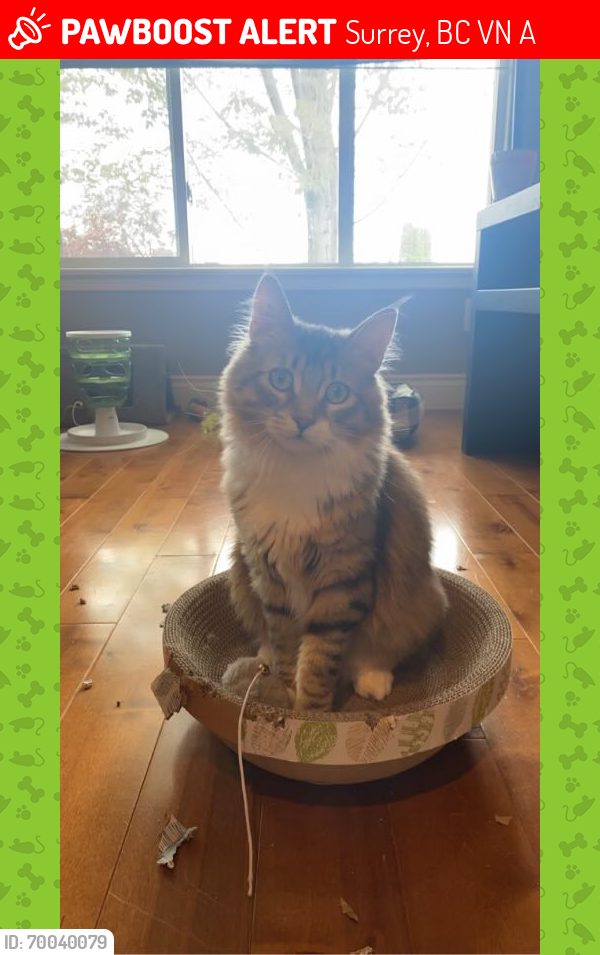Maria C.
2 months ago
https://www.vokra.ca/lost-cat
WHAT TO DO IF YOUR CAT IS LOST
Losing your cat can be very stressful on everyone involved.
Here are some steps you should take if you discover you cat is missing.
BEGIN SEARCHING RIGHT AWAY
Don’t wait and hope the cat will come back on its own. Get help from friends to cover more territory faster and take time off work if you can.
Make sure s/he is not in the house. Cats can hide in remarkable places!
Search after dark and at dawn, especially if you have limited time. 11 p.m. – 2 a.m. is prime time for lost cats to show themselves.
Use daylight hours for sussing out likely hiding spots, putting up posters and talking to neighbours.
If you see your cat don’t run to over to it or yell. Stop, sit and call calmly. Try shaking treats and toss one or two over to where the cat is. Too many cats are chased when spotted and they end up running even though they know you. Remember to be patient. If the cat does come to you, scruff it firmly, hold it close and get in house right away as this is safer than trying to get it into a kennel. We suggest you have a towel with you to cover the cat, especially over the face as this calms them.
If you’ve located the cat but are unable to grab it please see #7 below. When walking away, leave a trail of treats every two or three feet as the cat may follow and then walk right in the house.
HELP YOUR KITTY STAY NEARBY
Put a dish of water and your cat's favourite food near the window or door they escaped from.
If possible, leave a window or door open for the cat to get back in. Other pets can be kept secure in a closed room. If you didn’t see your cat escape, or are at all uncertain, don’t leave windows or doors open. Leave smelly food out in a couple of rooms and see if it is eaten (while, of course, keeping other animals out of the area).
Leave an article of your unwashed clothing, like a worn sock, at the point of entry.
SEARCH CLOSE TO HOME
Cats often break out but then get scared and hide. They generally avoid wide open spaces and most often they’re found very close to home. Stay tight to your block, across the street and across the lane. After 24 hours, expand your search to a 4-5 block radius.
Walk around the neighbourhood shaking treats and gently calling the kitty's name.
CHECK EVERY NOOK AND CRANNY
Look for crawl spaces, garages, sheds, under decks and balconies and any sheltered spot a cat can get into (any space 3-4" high). Take note of likely hiding places and return to them repeatedly.
Ask your neighbours for permission to look in their yards. Ask them to open their garages or sheds. Sometimes cats run in when the door is open and then people unknowingly lock the door with the cat stuck inside
POSTER THE NEIGHBOURHOOD
Get bright posters up right away with a phone number you can be reached at 24/7 (if raining put the posters in plastic sleeves). Post them at the front of your house and the corners of every block within a two block radius. Let all your neighbours know. After 24 hours expand your posters to a five block radius.
Your poster should include a photo (colour is best), the name of the cat, where and when it became lost (date and cross streets), brief identifying description and a phone number where you can be reached 24/7. Specify “DO NOT TRY AND CATCH” and simply ask people to call with the location of where the cat was sited and at what time.
Follow up on every lead to see if the cat the person called you about is your cat. After awhile you'll know which cats belong where and you won't have to go out on every call as you'll know from experience if the cat is likely yours or not.
USE ALL OF YOUR RESOURCES
Notify the veterinary clinic where your cat was tattooed or microchipped. Make sure your contact information is up to date.
Contact the SPCA or local shelter in your city and take a poster of your missing cat to them. Phone them every day to see if anyone turned in your cat.
Post your lost cat on the internet: send a photo, address with cross streets and detailed description of the cat and your cell number. If someone finds your kitty this is likely where they will start looking for its owner.
Missing Pets in BC
Craigslist lost and found
Kijiji lost and found
BCSPCA lost and found
Pawboost
Petsearchers Canada has lots of great tips on their website. Petsearchers also offers a bloodhound service to track lost pets for a fee.
SET A TRAP
Sometimes indoor cats get quite panicked once they’re outside. Even the most friendly cat will be wary after a few days outdoors and may not respond to you at all. Silence keeps it safe. A humane trap baited with tuna is the quickest, easiest and safest way to capture it.
Once set, stay close by and monitor the trap at least every two hours. A cat or wild animal will be distressed in a trap and can get dehydrated quickly. It is not safe to leave them in a trap for too long, especially in very hot or cold weather.
If you have no luck searching, or if you see the cat and it won't come to you, you can always call us at 604-731-2913 or email info@vokra.ca to borrow a humane trap and get tips for using it.






